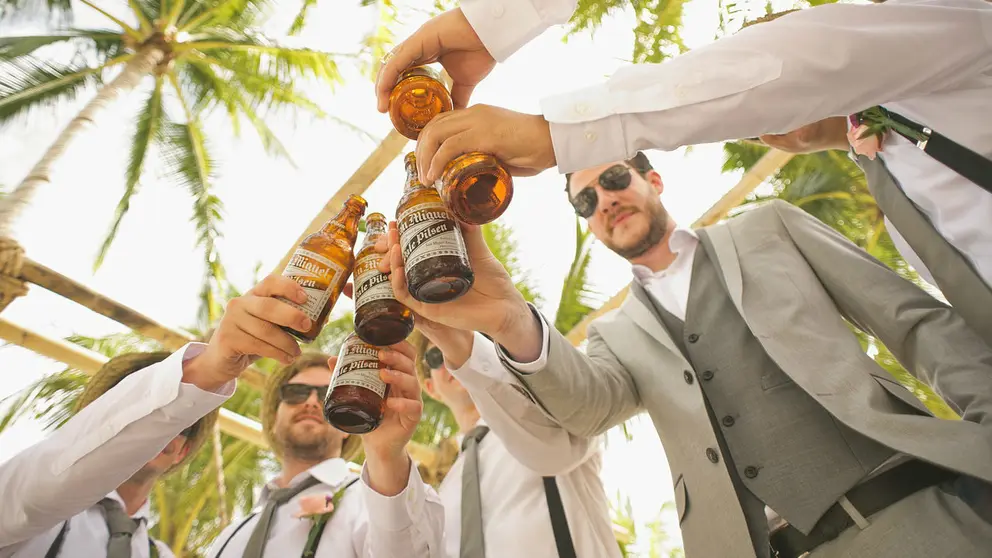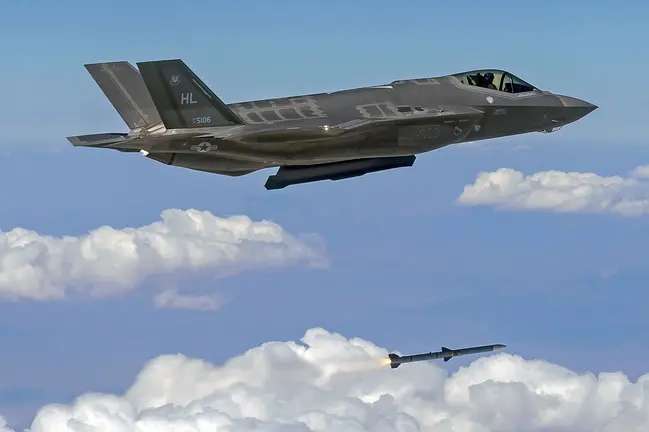“Alcohol is, and has been, an unusually important substance for Finns. This is not because Finns have always drunk, or drink, an unusual amount –rather the opposite. The reason for this special relationship of Finns with alcohol is to be found in their permanent framework of living: Finland is a northern, cold and sparsely populated country”.
The text quoted above is the beginning of one article dedicated to the influence of alcohol in Finland that is included in the book 'Finland, a cultural encyclopedia' (Helsinki, 1997), published by the prestigious Finnish Literature Society.
The way in which alcohol is consumed in Finland is in most cases a shock for people coming from other cultures. To confirm that this "special relationship" between Finns and alcohol exists, one only has to visit the pubs on a Friday or Saturday night or -better yet- take any of the cruise ships that daily link the main coastal cities of the country with Sweden, Estonia or Russia.
If you have done it already, probably you must be thinking: “Yes, those Finns who drink are usually very heavy drinkers", "when they start they do not stop until they fall down”. And you will probably understand why the phrase “drink like a Finn” is becoming more and more popular in the neighbouring countries.
This does not mean, however, that all Finns drink like sponges. Surely in percentage there are no more drinkers in Finland than in countries of southern Europe. But the truth is that those who drink take the task very seriously, as they probably do in any other field of their lives.
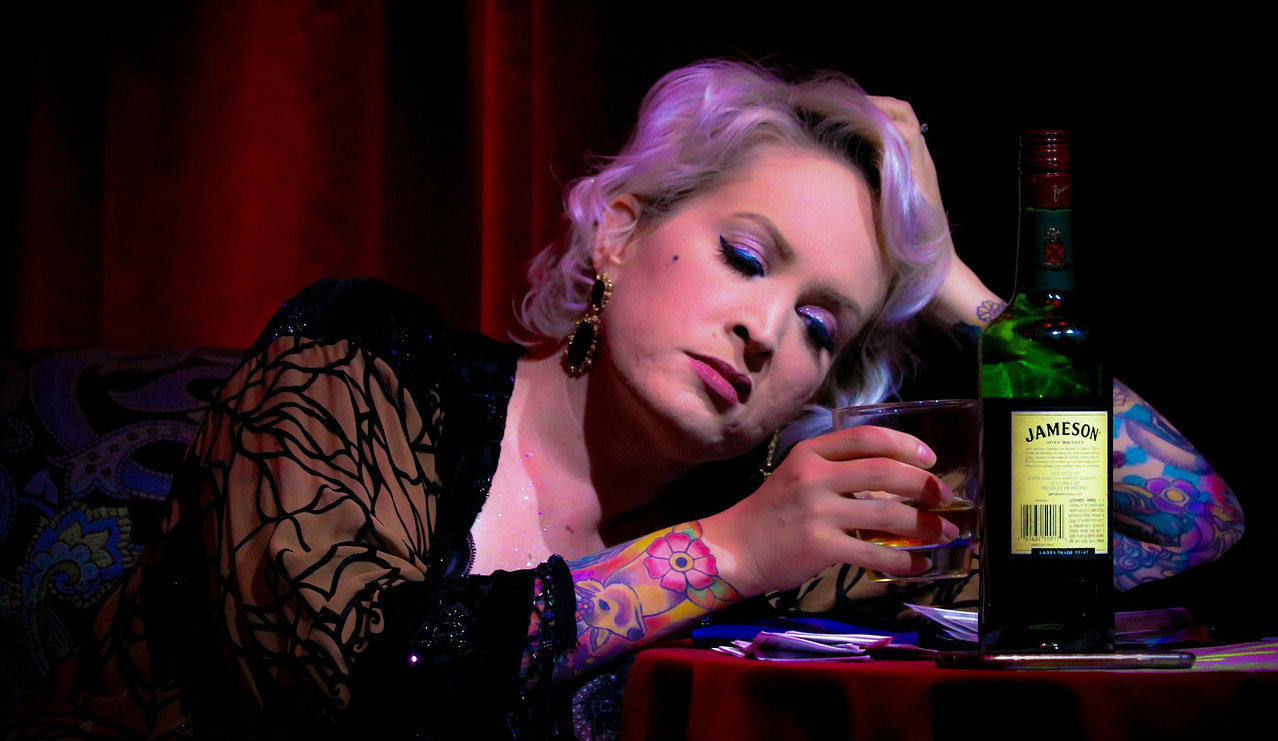
But let's set aside prejudices and assumptions. The aim of this article is to try to explain where is the origin of this special relationship of Finns with the blowing of liquor bottles. And to try to answer that question, nothing better than to tell what the Finns themselves have said on the matter.
The origins, the prohibition
According to the article included in the book ‘Finland, a cultural encyclopedia’ and signed by Matti Virtanen, the unusual role of alcohol and drunkenness in Finland has “a short and well-defined history, arising from the fact that almost total prohibition predominated there for almost exactly a century, from 1866 to 1968”.
The trigger factor was that in 1866 rural farmers were forbidden to distil liquor. Until then, distilling had been for them both an important source of income and a tool of social power: excess grain was sold on the market as distilled liquor, and part of the wages of farm workers was paid directly with alcohol.
So, while in the other Nordic countries the right to domestic distillation disappeared because of commercial competition with factory production of liquor, in Finland it was forbidden by law. The Government’s idea was to accelerate industrial production of alcoholic drinks, so that would be able to collect fatter taxes from the liquor factories than from the farmers, but the result was completely the opposite.
In revenge, the rural population refused to buy factory liquor, and consumption of alcohol in the countryside declined. On a later stage, the farmers completely prevented the legal sale of liquor and beer in the rural areas.
In the late 19th century, because of their position of ownership, farmers had a lot of power in local governments. Due to that, they were able to instigate a series of municipal alcohol prohibitions that gave rise to a ‘dry’ countryside as early as the 1890s. And until the 1950s “the countryside was practically the whole of Finland”, because the towns remained small and low populated.
The driest country in Europe
Always according to the article included in the book ‘Finland, a cultural encyclopedia’, by the early 20th century Finland had become “Europe’s driest country”.
The numbers provided by Matti Virtanen support this idea and show that consumption was highest in France, with 22.9 litres consumed per person, while this figure was between 5 and 10 litres in most European countries. In Sweden it was 4.3 litres and in Norway it was 2.4 litres, but the Finnish record was in a class of its own: only 1.5 litres.
From that stage there was just one small step to total prohibition. In fact, demands soon arose in the countryside. And this petition was also supported by the labour movement, which called to resist “alcohol capitalism” and the conspicuous consumption of alcohol by the upper classes. Since the poorest people could not include alcohol in their household budgets, banning the joys of liquor from the richest was an attractive idea for them.
The brand-new parliament elected in 1906 decided, as one of its first actions, to pass the Prohibition Law unanimously. However, it became law only in 1919, after Finland’s independence and civil war.
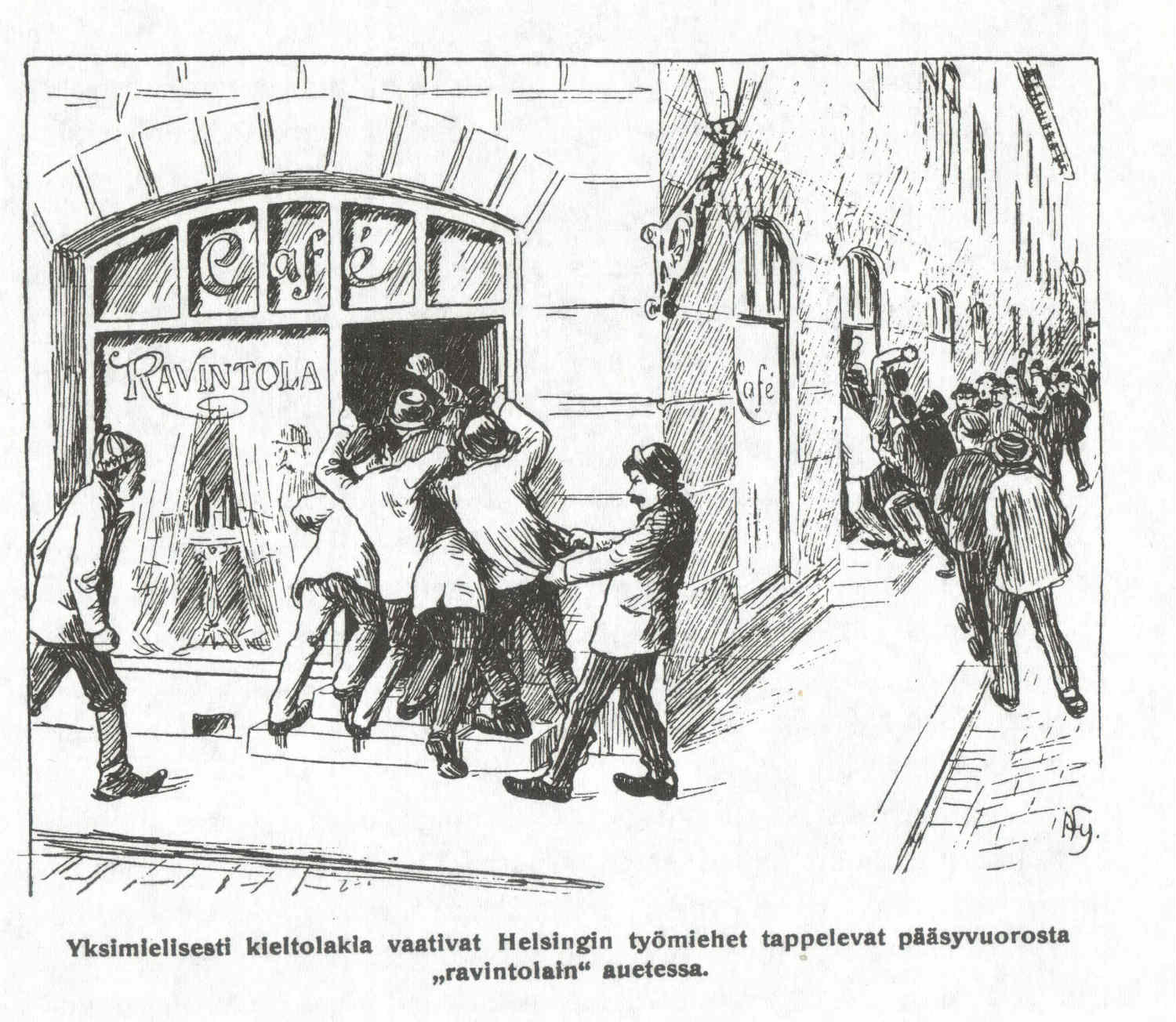
'Working men of Helsinki, unanimous supporters of alcohol prohibition, fighting for seats as the "restaurants" open'.
Author: Alex Federley
Unwanted results
Once again, the law brought a result that was the opposite of what was intended. The municipal prohibitions had worked relatively well, but now the total ban on liquors caused “extensive smuggling and trafficking” and alcohol became cheap and almost freely available.
The Prohibition Law was repealed in 1932, but only in the towns. The countryside remained dry until 1962. In parallel, a centralised national monopoly was established for the production and retailing of alcohol, what allowed restriction and surveillance of the drinking habits of the common people, particularly the working classes in the towns.
The book explains that as a result, consumption remained low (around a couple of litres) until 1963, when a more liberal alcohol law was passed. By the mid 1970s, consumption had risen to more than 6 litres, at which level has remained. Since the entry of Finland to the European Union (EU), all that is left of the formerly powerful alcohol monopoly, Alko, is a retail monopoly, operating on a self-service system.
Drinking as revenge and defiance
As explained above, the prohibition in Finland first produced a kind of revenge process. And “the same spirit of defiance, bluster and resistance became, at the same time, a central feature of Finnish drunkenness”. The landless farmers protested drinking against the dryers of the countryside; the workers used alcohol in their bars to conduct a sort of a mental class struggle against the ‘bourgeoisie’.
In drunkenness, the silent resentment and bitterness toward the lords of life and keepers of power became defiance. These features form the core of the so-called Finnish drunk.
After the 1950s, Finland went through rapid social change. People migrated from the countryside to towns, the welfare state was constructed and the standard of living improved. Finnish people became more middle-class and this was reflected also in the nature of Finnish drunkenness, that according to a number of researchers was becoming tamer.
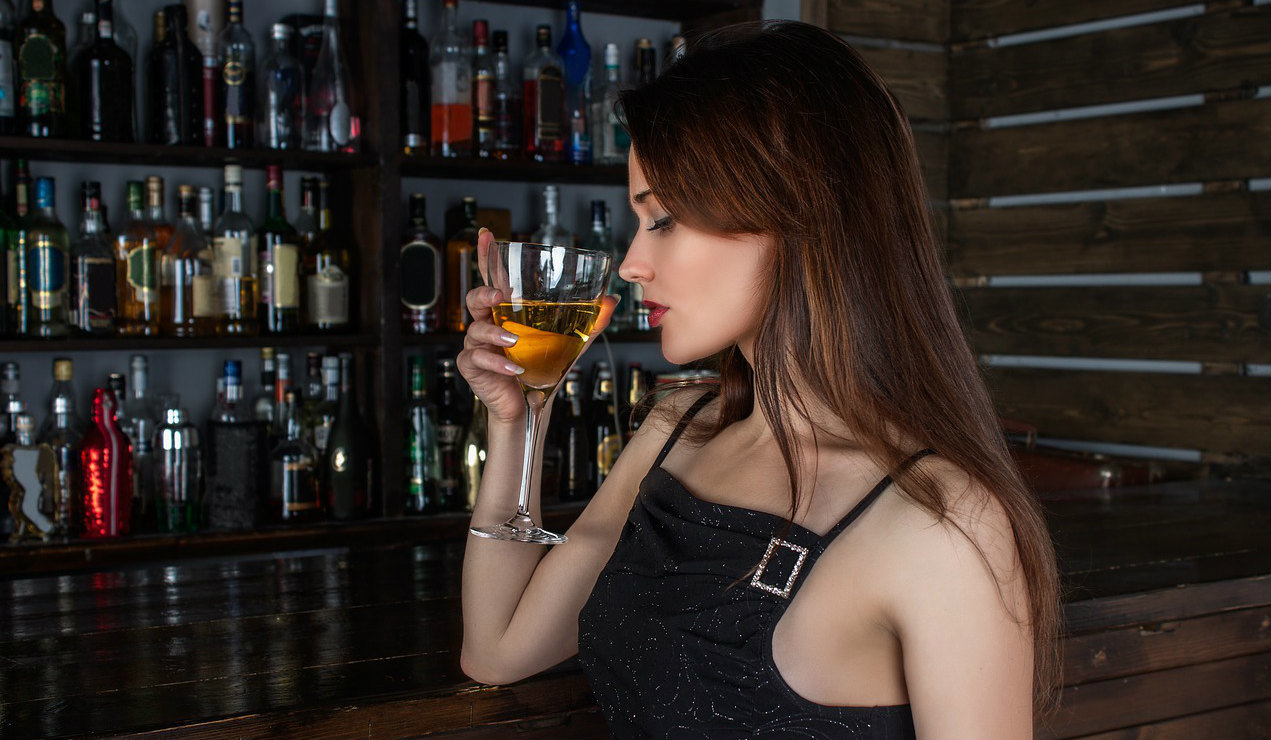
However, at the beginning of the 1990s the country faced dramatic changes: the deepest recession in the century, massive unemployment, technological changes and the EU integration. The young, fragile Finnish homogeneity begun to crack and again the worlds of the fortunate and the unfortunate became much distanced.
This division has been increasing in the latest years. The class divisions, the existence of an under-educated class of people and the arrival of thousands of migrants from other countries have led to the birth of a new kind of ‘urban peasantry’. Public statistics show that the number of people at risk of suffering poverty is growing. If this evolution becomes permanent, Finnish drunkenness, which had been becoming softer, may grow wild again.








